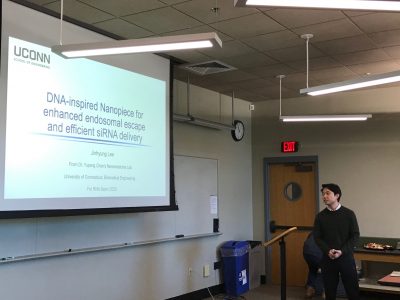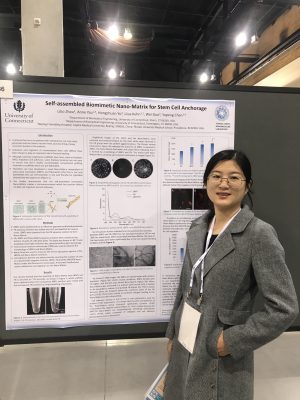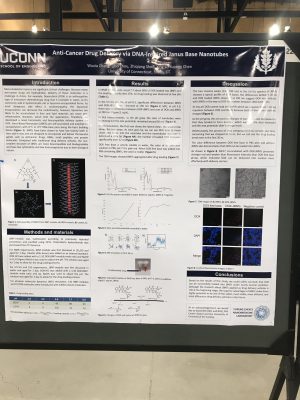On February 14th 2020, UConn Chemistry Department, together with RNA society and Lexogen hosted a UConn RNA Salon 2020. It was an hour seminar talking about the thing most of us enjoy! SCIENCE!
Our first-year Ph.D., Jin, was given the opportunity to present his work on his current research, titled “DNA-inspired Nanopiece for enhanced endosomal escape and efficient siRNA delivery”
As many may know, RNAi Therapy is an up and coming treatment for many diseases. Patirsiran (Common name Onpattro) was approved by the FDA recently in 2018. Patirsiran is the first clinical treatment for polyneuropathy of hereditary transthyretin-mediated amyloidosis in adult patients, a treatment for peripheral nerve disease. Human ATTR amyloidosis affects several parts of the body and can affect the quality of life in patients. This shows that RNA can be developed into novel therapeutics to treat a variety of diseases.
However, like all things in life, there are challenges of using RNAi. Unlike conventional drugs, siRNA do have to get into cells and getting into cells is not an easy task, due to the negative surface charge, large molecule weight and enzyme degradable structures of siRNAs, it is difficult for them to get into human cells without delivery. Unfortunately, some of the current known delivery vehicles are usually internalized by cells via endocytosis forming endosomes (You know, like eating and digesting?). It has been a challenge for many scientists around the world to find a way to bring the siRNA into cells.
Hence, we proposed a novel bio-inspired nanomaterial to be used as a delivery vehicle. These nano-materials are engineered with DNA based pairs which result in high biocompatibility with the human body. Our nano-materials are called the Janus-based Nanotubes (JBNTs) where we have Cytosine and Guanine together with a conjugated side chain of Lysine. The most interesting part is that these molecules can self assemble into nanotubes by hydrogen bonds and stack on each other via pi-pi stacking. With this nanotubes, he and the other students were able to develop a type of delivery vehicle for RNAs to be delivered into cells, better in escaping the endosomes!
So now that you have a summary of his presentation, you’ll have to find out what are the results by contacting him personally! Find out more! By talking to Jin! 😛 (jinhyung.lee@uconn.edu)




